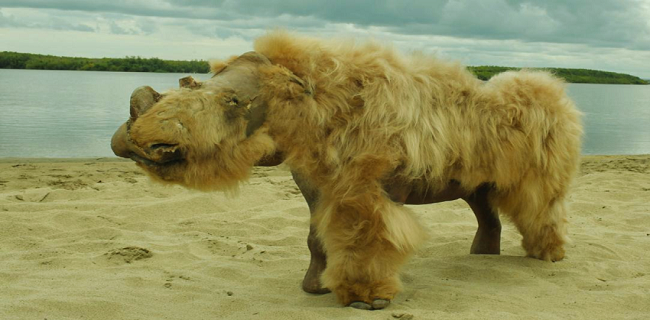The discovery of frozen ice age puppies in the permafrost of Siberia has been making headlines across the world. These puppies are believed to be over 12,000 years old and are among the oldest canine remains ever found. This discovery has provided new insights into the history of frozen ice age puppies and their relationship with humans.
Discovery of Frozen Ice Age Puppies
In 2011, a group of scientists were conducting research in the Siberian region of Yakutia when they stumbled upon the remains of two puppies. The puppies were remarkably well-preserved, with their fur, teeth, and internal organs still intact. Radiocarbon dating revealed that the puppies were over 12,000 years old, making them some of the oldest canines remains ever found.
Researchers believe that the puppies were part of a larger litter that was born into a den in the permafrost. They likely died shortly after birth and were preserved in the frozen ground ever since.
Genetic Analysis
The discovery of the frozen ice age puppies provided an opportunity for scientists to study the genetics of ancient dogs. Researchers extracted DNA from the puppies and compared it to the DNA of modern-day dogs.
The analysis revealed that the puppies were more closely related to modern-day dogs than to wolves, which suggests that they were domesticated. This finding supports the theory that dogs were domesticated from wolves by early humans.

Additionally, the analysis revealed that the puppies had a genetic mutation that is common in modern-day dogs. This mutation is associated with the development of a smaller jaw and teeth, which is consistent with the idea that dogs were selectively bred for certain traits by early humans.
Relationship with Humans
The discovery of the frozen ice age puppies also sheds new light on the relationship between dogs and humans. The fact that the puppies were found near human settlements suggests that they were living near humans.
Additionally, the genetic analysis revealed that the puppies were likely domesticated by humans. This suggests that dogs have been living alongside humans for at least 12,000 years, which is longer than previously thought.
Conclusion
The discovery of the frozen ice age puppies has provided new insights into the history of dogs and their relationship with humans. The fact that the puppies were domesticated suggests that dogs have been living alongside humans for at least 12,000 years. This finding is significant because it suggests that dogs played an important role in early human societies and may have contributed to the development of human civilization.
The genetic analysis of the puppies also supports the theory that dogs were selectively bred by humans for certain traits. This finding suggests that early humans recognized the potential of dogs as companions and working animals and actively worked to shape their development.
Overall, the discovery of the frozen ice age puppies is an exciting development in the study of dog history. And provides a glimpse into the deep and complex relationship between humans and their furry companions.







